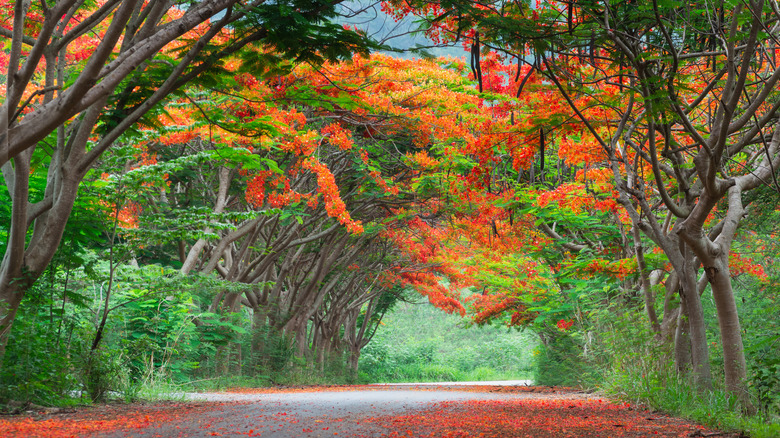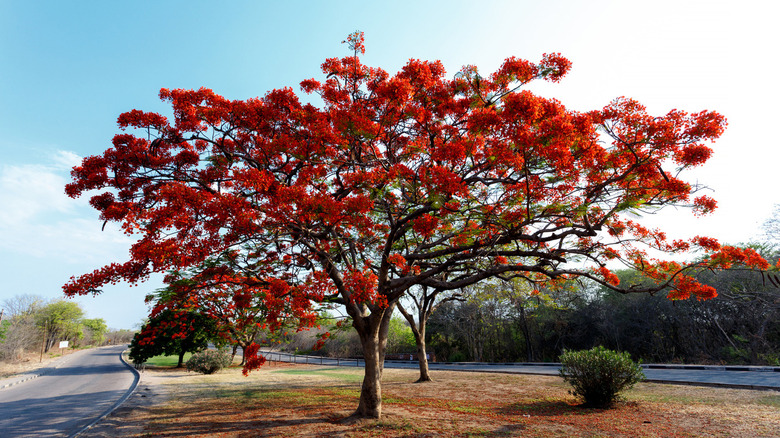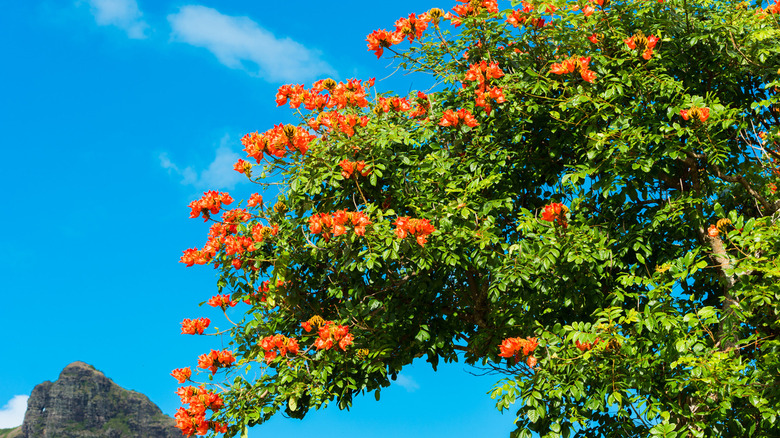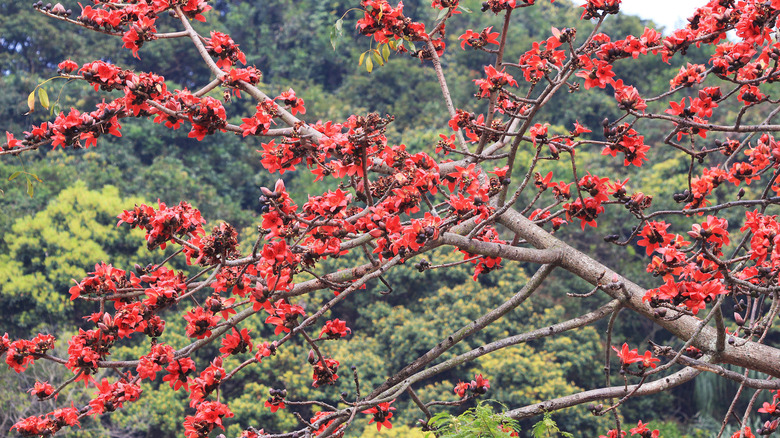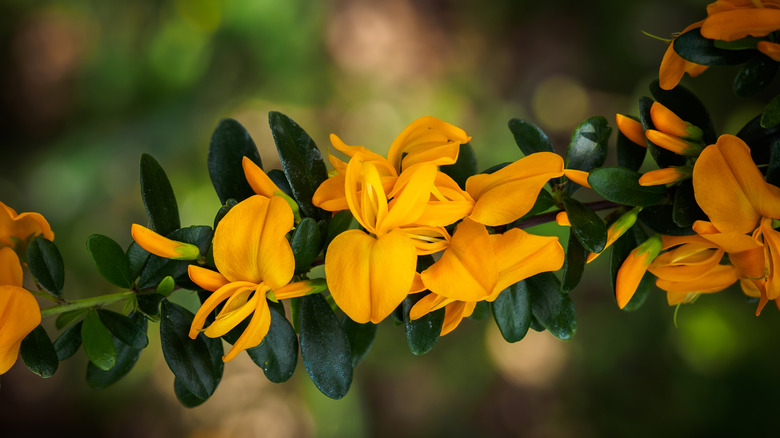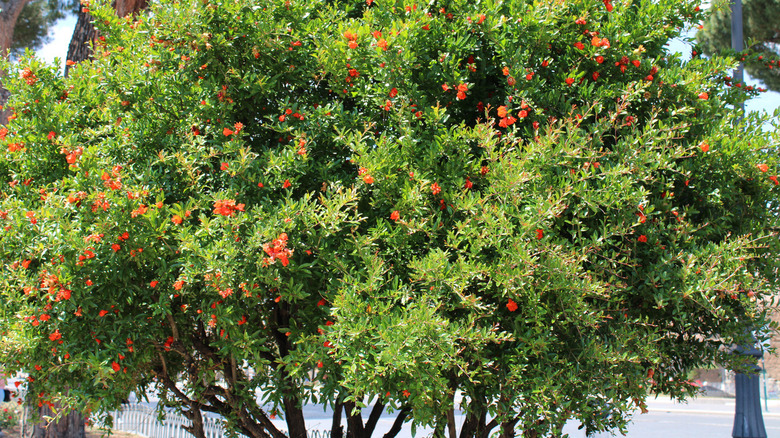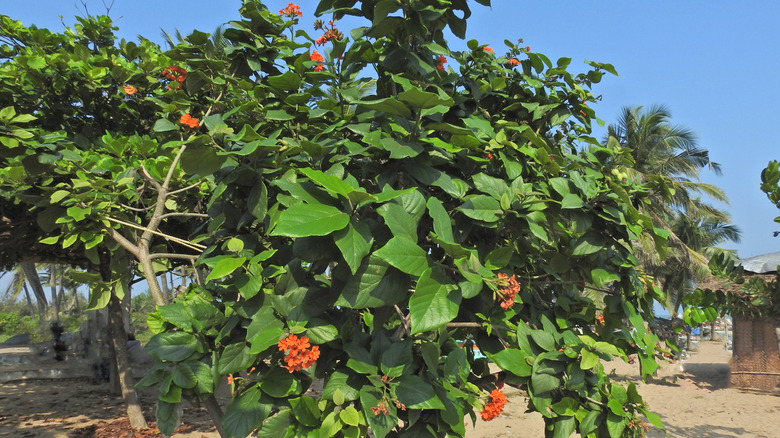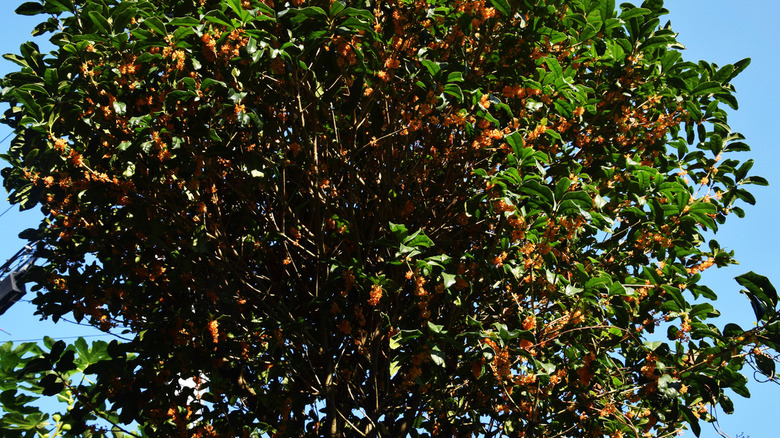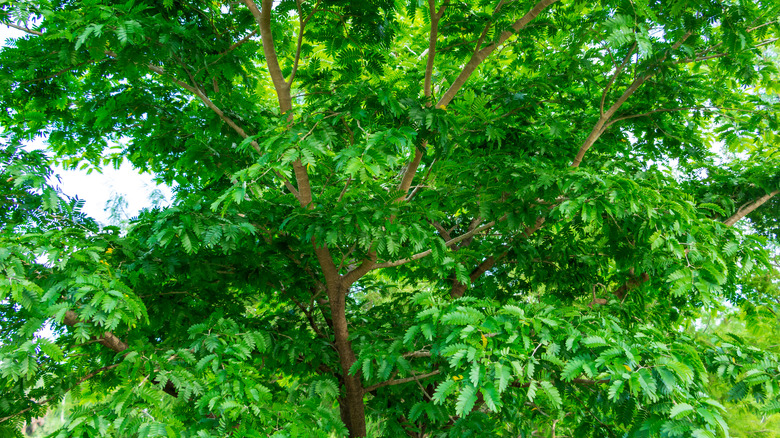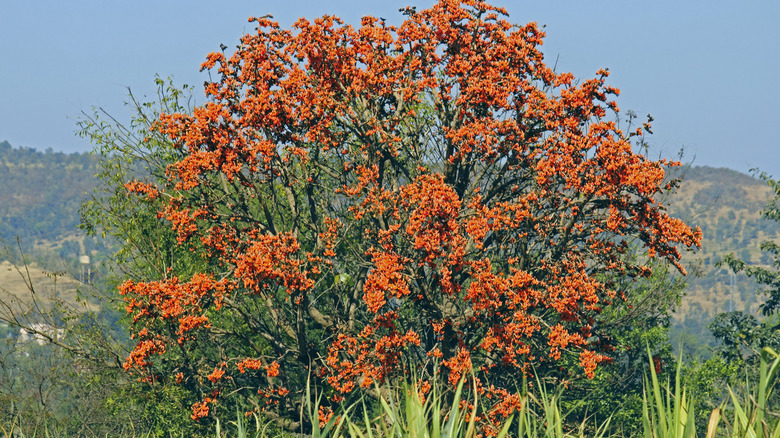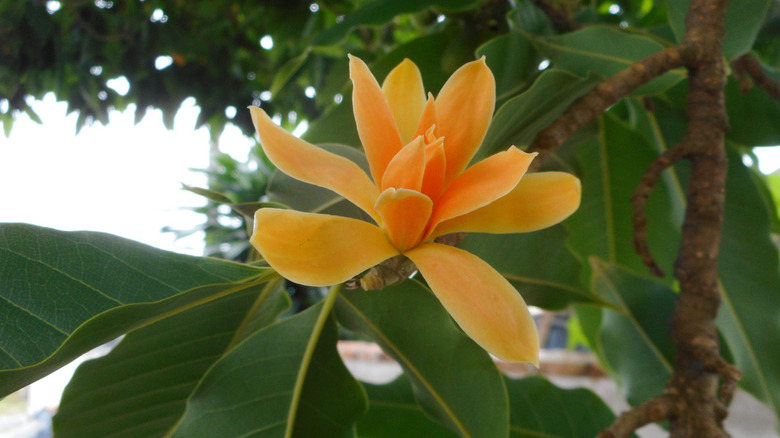10 Trees That Bloom With Gorgeous Orange Flowers
Flowering trees are a delight to the eyes. They not only add much-needed color and attention to the yard but are often the first sign of warming temperatures. Trees might not be as popular as annual or perennial plants but with the right placement, flowering trees have the potential to change the appearance of your yard. One unique characteristic of most flowering trees is that they are often relatively short and native, according to Mulhall's. This makes them quite versatile and able to fit right into a smaller garden.
There is no doubt that flowering trees are awesome; however, trees that bloom with orange flowers are extra special. The orange color is often overlooked but it provides a special burst of color, bringing the whole yard to life. Orange flowering trees are not as common as their red flowering trees counterparts, and they are not the scarcest either. This unique balance is what makes such trees quite admirable. There are plenty of orange blooming tree varieties and it is easy to get overwhelmed or feel lost. Here are a few options that should help you get started.
1. Royal poinciana
The royal poinciana (Delonix regia) is a large evergreen tree popular for its orange blooms, especially during summer. It features a broad crown when fully mature, making it a good option if you want to incorporate some shade into your yard. Because of the wide canopy, you need to plant the royal poinciana where there is enough space (via the University of Florida Gardening Solutions.)
Bloom Season: Summer
USDA Growing Zone: 9 to 11
Growing Conditions: Full sun exposure
Soil Type: Not picky on the type of soil
Size: 30 to 40 feet tall
2. African tulip tree
Also referred to as the Spathodea campanulata, the African tulip is a large tree with an equally massive crown. Although it is considered invasive in tropical climates, this tree is quite popular for its ornamental properties. The cluster of orange flowers within the deep green foliage appeals to the eyes. Since it is a large tree, it is not ideal for smaller gardens or yards (via University of Florida Extension.)
Bloom Season: Winter to late spring
USDA Growing Zone: 11 to 12
Growing Conditions: Full sunlight
Soil Type: Rich, well-drained
Size: Up to 60 feet tall
3. Red silk cotton tree
Native to Australia, the red silk cotton tree (Bombax ceiba) is common in the US for its ornamental value. It is fast-growing, getting just as wide as it is tall. During the flowering season, this tree sheds all its leaves before any flowers emerge (per the North Carolina Extension).
Bloom Season: Spring
USDA Growing Zone: 10 to 12
Growing Conditions: Full sunlight
Soil Type: Neutral, well-drained
Size: 70 feet tall
4. Jamaican rain tree
The Jamaican rain tree (Brya ebenus) hails from the West Indies. Nonetheless, this particular tree is quite common in the US and is popular because of its colorful orange blooms and signature long, oval leaves. Depending on the species, the Jamaican rain tree blooms in a variety of colors, including white, orange, and yellow (via The National Gardening Association).
Bloom Season: Summer
USDA Growing Zone: 10
Growing Conditions: Full sun
Soil Type: Neutral to slightly acidic, well-drained soil
Size: Up to 30 feet tall
5. Pomegranate
The pomegranate (Punica granatum) is popular for its fruits while its ornamental value is largely understated. The glossy and beautiful blooms not only attract the human eye but also birds and other pollinators. This tree variety features shorter dwarf options and also trees that grow tall, ideal for larger gardens. It requires relatively fewer care practices, making it ideal for beginner gardeners (via New Mexico State University ACES).
Bloom Season: April to June
USDA Growing Zone: 7 to 10
Growing Conditions: Full sun
Soil Type: Not picky with soil type
Size: 3 feet to 30 feet tall
6. Geiger tree
The Geiger tree (Cordia sebestena) is an evergreen option that can grow in confined spaces. This particular tree does poorly in cold environments but thrives in tropical zones. Geiger trees grow rather slowly but can get quite big especially when in their native environment. They flower almost all year round but the flowers are most abundant during the warm summer months (via the University of Florida Extension).
Bloom Season: All year round, but predominant during summer
USDA Growing Zone: 10b to 11
Growing Conditions: Full sun
Soil Type: Neutral, well-drained soil
Size: Up to 25 feet tall
7. Fragrant orange tea olive
True to its name, the fragrant orange tea olive (Osmanthus fragrans f. aurantiacus) is popular for its attractive orange blooms and pleasant inviting scent. This evergreen tree features dense foliage with leathery leaves that retain their color and texture all year round. The dense foliage makes it ideal for hedges around the garden (via Missouri Botanical Garden).
Bloom Season: April
USDA Growing Zone: 8 to 11
Growing Conditions: Full sun to partial shade
Soil Type: Acidic, well-drained soil
Size: 10 to 15 feet tall
8. Vera wood
The vera wood (Bulnesia arborea) is a huge tree with an equally impressive crown. It is relatively slow growing and can be used for its ornamental value thanks to the yellow-orange blooms. Vera wood trees feature compound leaves with up to 24 leaflets. Other than the ornamental value, the University of Florida Extension mentions that this tree is quite tolerant to dry weather and not picky when it comes to soil type.
Bloom Season: Summer
USDA Growing Zone: 9 to 12
Growing Conditions: Full sun
Soil Type: Grows in most soils
Size: 20 to 30 feet tall
9. Flame of the Forest
Just as the name suggests, the floral display of the Flame of the Forest (Butea frondosa) resembles a flame. It is a mid-sized slow growing tree whose trunk twists as it matures. After the bloom, the flowers quickly give way to pods with a single seed. The Missouri Botanical Garden mentions that the Flame of the Forest tree often doesn't bloom if the cold season is too harsh.
Bloom Season: Summer
USDA Growing Zone: 10 to 12
Growing Conditions: Full sun to partial shade
Soil Type: Organically rich, well-drained soil
Size: 30 to 40 feet tall
10. Orange champaca tree
The orange cahapeca (Michelia champaca) tree has some unique bloom colors that you won't find just anywhere. The cream, orange-colored flowers coupled with the evergreen foliage is what makes this tree special. You have the option of trimming the large crown into a round shape for extra visual appeal. The strong scent from the blooming flowers will perfume the entire yard or garden (via Monrovia).
Bloom Season: Winter through spring
USDA Growing Zone: 10 to 12
Growing Conditions: Full sun
Soil Type: Thrives in any soil
Size: 30 feet tall

